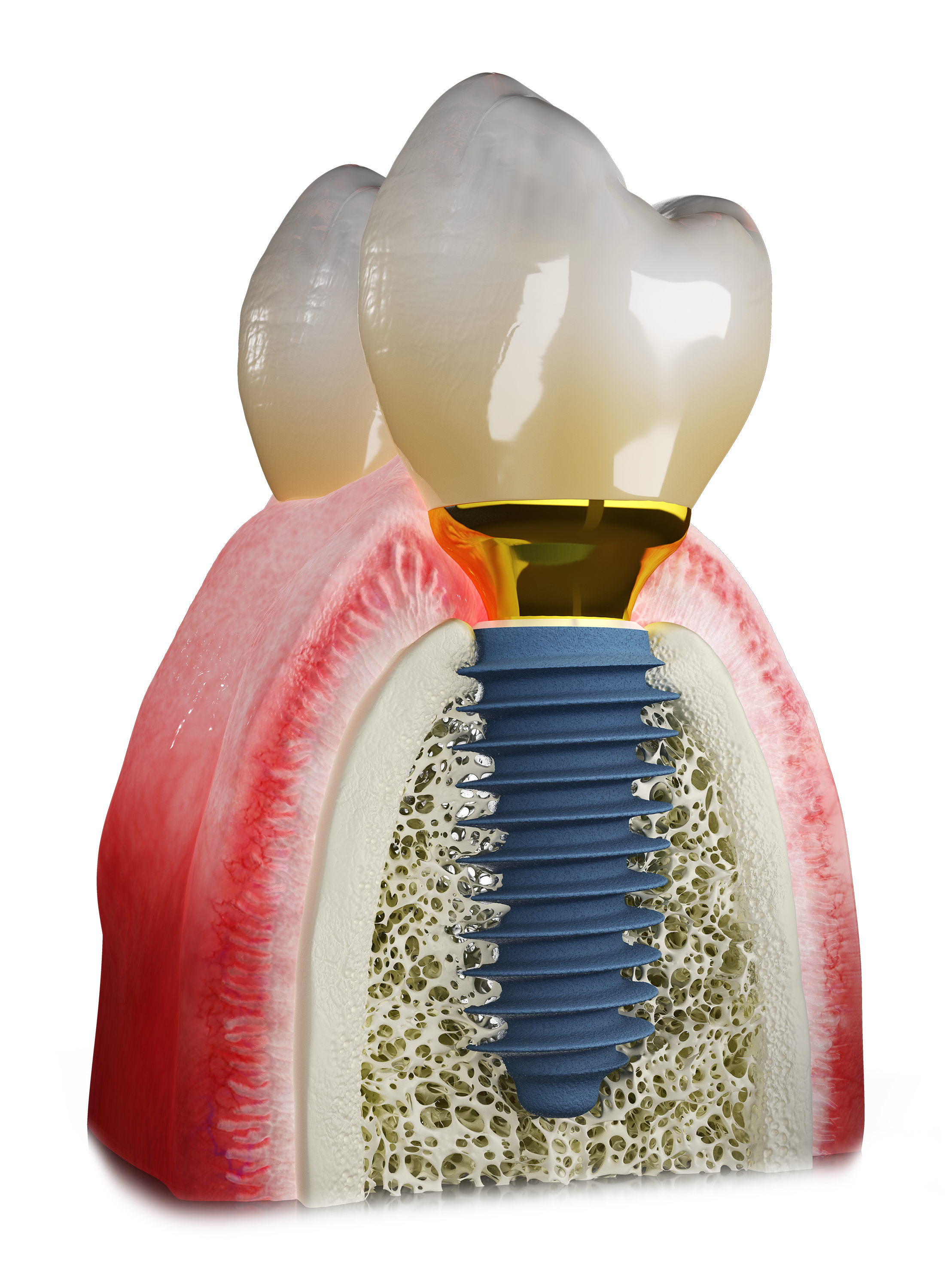🦷The tooth is located in the jawbone, the root part is held by the bone and protected by the gum.
☝With the loss of a tooth, the bone and gums lose volume over time.
The longer the missing tooth is left unreplaced, the deeper the defect, which is harder to repair. It is important to retain the tissue around the tooth immediately,most often by placing an implant immediately after tooth extraction (extraction or extraction). It is easier and cheaper to place an implant (if the bone volume is sufficient), the crown of the future tooth will be more aesthetic and a functioning tooth will be achieved sooner.
It is best to replace a non-restorable tooth with a dental implant, under certain conditions👉
- Sufficient bone volume remaining after tooth extraction (8-10mm bone volume is required for implant fixation, this can be assessed before tooth extraction by 3D X-ray);
- sufficient gingival thickness (if the gingiva is thin, the gingiva can be augmented with its own gingival graft or collagen membrane);
- good oral hygiene and the client is responsible (follows the doctor’s instructions);
no acute inflammation (rotting teeth); - no uncontrolled health problems (e.g. diabetes, high LDL cholesterol, low vitamin D levels, high blood pressure, heart problems, etc.);
- not active smokers (one pack of cigarettes a day or more).
What if the bone volume is not sufficient before the tooth extraction?
- With a small bone defect, an implant can be placed, and the missing bone can be augmented around it with bone substitute materials, or preferably your own bone (ask your doctor for additional costs);
- for a large bone defect, remove the tooth, pack the wound with synthetic bone material (for the volume) or your own dentin tissue (you can use your own tooth tissue) or leave as is, suture the wound and wait 3 months for the bone to heal.Then take a 3D X-ray to assess the bone volume and plan the implantation. In this case the bone volume is reduced by about 25-30% and additional augmentation is possible during the implantation (assessed by the doctor and there are additional costs).
What if there is not enough gum volume?
The optimal gingival volume around the implant is 3-4 mm and has a high protective function. The thicker the gum, the more stable the bone around the implant, which influences its longevity.
If there is a lack of gingival volume you can:
- place the implant deeper, if the bone allows;
- augmented with gum substitute materials – preferably your own tissue (autografts) or collagen (ask your doctor about the extra cost).






